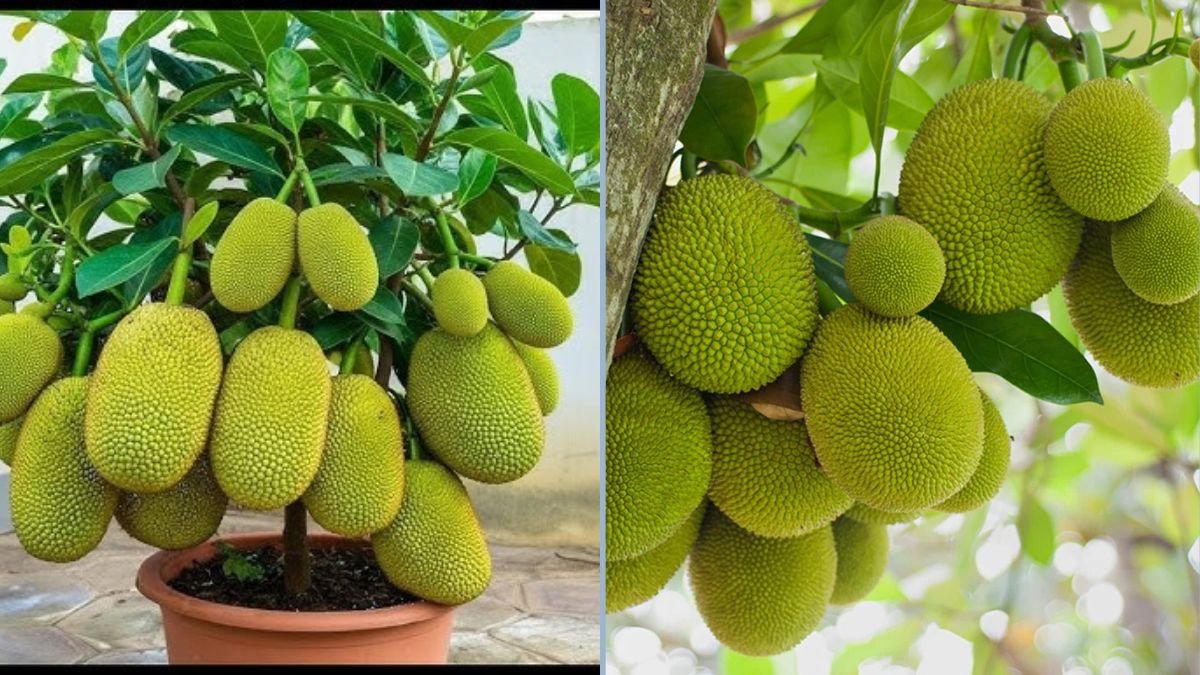Jackfruit (Artocarpus heterophyllus) is one of the most popular tropical fruits, celebrated for its sweet, aromatic fruit and impressive size. While jackfruit trees can grow large, it’s possible to cultivate them in plastic pots using grafting techniques. Grafting not only allows you to grow high-quality trees in limited spaces but also accelerates fruiting compared to seed-grown trees.
This comprehensive guide explores the step-by-step technique of grafting jackfruit trees and provides tips for growing healthy jackfruit trees in plastic pots, ensuring high success and bountiful fruit production.
Why Graft Jackfruit Trees?
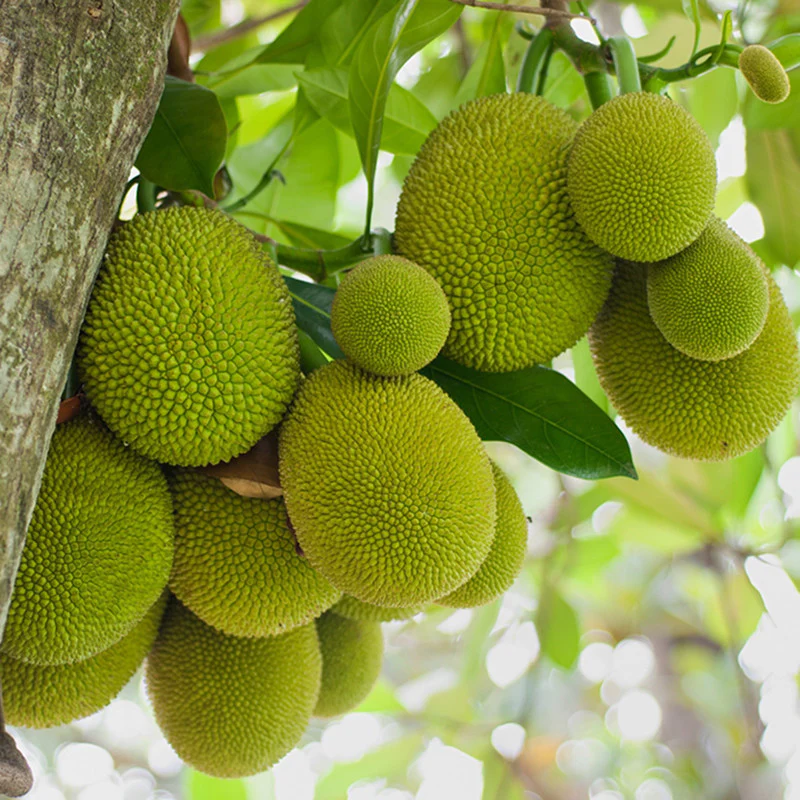
Grafting is a horticultural method in which tissues from a desirable jackfruit variety (scion) are joined to a compatible rootstock to produce a new tree. The advantages of grafting include:
- Faster fruiting: Grafted trees often bear fruit within 2–3 years compared to 5–8 years for seed-grown trees.
- High-quality fruits: Ensures that the fruit retains the same quality, taste, and characteristics as the parent tree.
- Space-saving: Ideal for growing in limited spaces, such as patios or small gardens, using plastic pots.
- Disease resistance: Grafting onto healthy rootstocks can improve overall tree resilience.
Grafting is the preferred method for both commercial and home gardeners seeking predictable fruit quality and faster production.
Step 1: Selecting the Rootstock and Scion
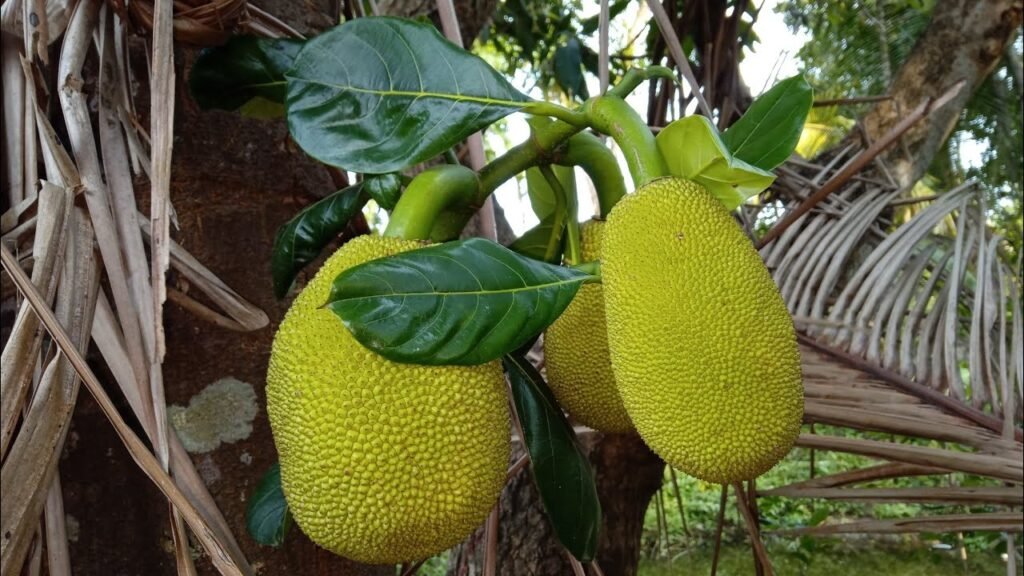
The first step in successful grafting is selecting healthy rootstock and scion:
Rootstock Selection
- Use a vigorous, disease-free jackfruit seedling or sapling.
- The rootstock should be well-established with a healthy root system and around 6–12 months old.
- Choose seedlings that are compatible with the scion variety.
Scion Selection
- Select a healthy branch from a mature jackfruit tree that produces high-quality fruit.
- Scion wood should be about 15–20 cm long with several buds.
- Avoid using branches that are diseased or weak.
Quality selection ensures high grafting success and healthy tree development.
Step 2: Preparing the Rootstock
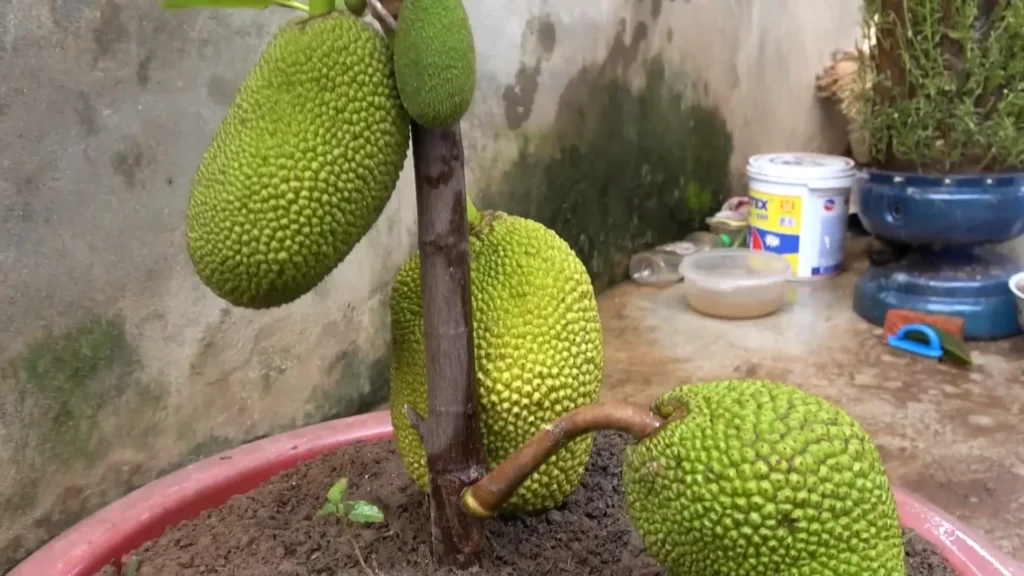
Proper preparation of the rootstock is critical for successful grafting:
- Trim the top: Cut the rootstock at a height of about 30–50 cm above the soil level.
- Clean the cut surface: Remove any damaged tissue to expose fresh, healthy wood.
- Make a grafting cut: Depending on the technique (splice, wedge, or cleft grafting), make a precise cut to fit the scion.
A well-prepared rootstock provides the ideal environment for the scion to unite and grow.
Step 3: Preparing the Scion
The scion must be prepared carefully to ensure proper alignment and nutrient transfer:
- Trim the base of the scion to match the cut on the rootstock.
- Remove any leaves near the graft point to prevent dehydration.
- Ensure the cambium layers (green tissue beneath the bark) of the scion and rootstock align perfectly for successful grafting.
Accurate preparation is essential for quick healing and strong union.
Step 4: Grafting Techniques
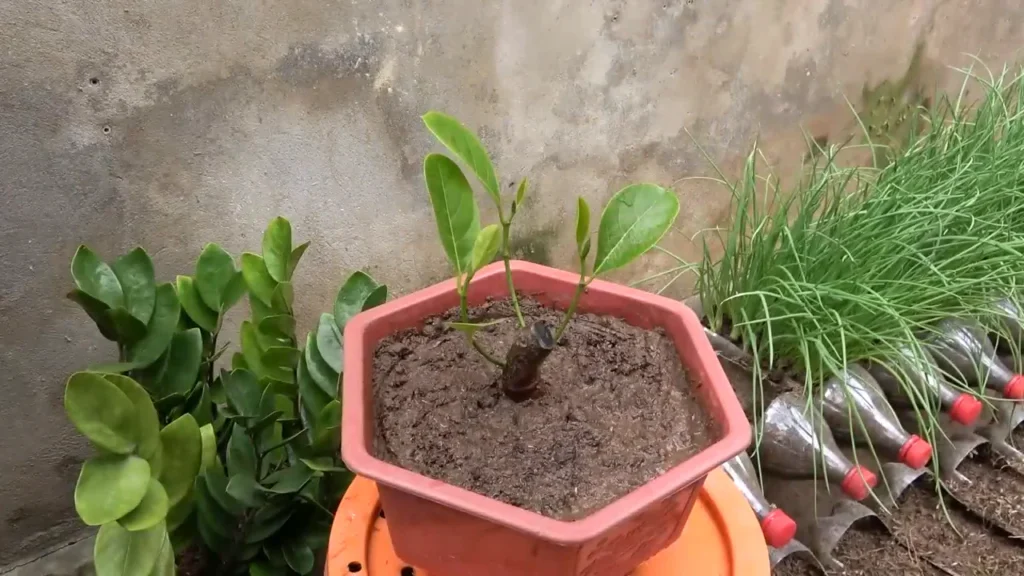
Several grafting techniques work for jackfruit trees, but the most common methods for pot cultivation are:
1. Cleft Grafting
- Suitable for larger rootstocks.
- Split the rootstock with a clean cut, insert the scion, and wrap securely with grafting tape.
2. Splice Grafting
- Ideal for rootstocks and scions of similar diameter.
- Cut both pieces diagonally and join them, ensuring cambium alignment.
- Secure with grafting tape or parafilm.
3. Approach Grafting
- Involves attaching a scion branch to the rootstock while both remain on separate plants until the union forms.
After grafting, wrap the joint with grafting tape or parafilm and cover it with a plastic bag if necessary to retain humidity.
Step 5: Planting in a Plastic Pot
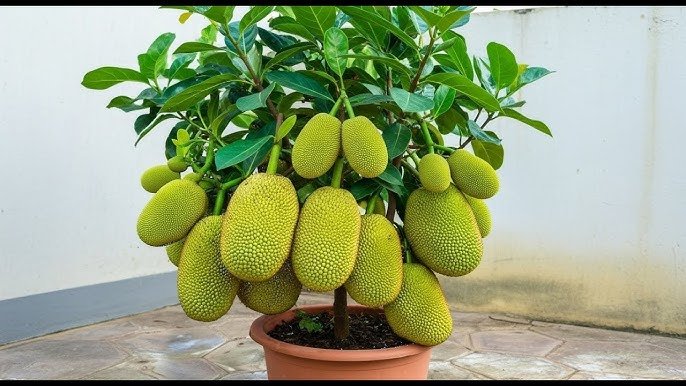
Growing jackfruit in a plastic pot allows control over soil, water, and space:
Choosing a Pot
- Use a large plastic pot (at least 40–50 liters) to accommodate root growth.
- Ensure drainage holes to prevent waterlogging.
Soil Preparation
- Use a well-draining soil mix with equal parts garden soil, compost, and sand.
- Add organic fertilizers or vermicompost to provide nutrients.
Planting the Rootstock
- Fill the pot with the prepared soil and plant the rootstock firmly.
- Ensure the graft union is above the soil line to prevent rot.
- Water thoroughly after planting.
Step 6: Caring for Grafted Jackfruit Trees
Proper care ensures successful grafting and vigorous growth:
Watering
- Maintain consistent moisture without waterlogging.
- Young grafts need regular watering to support root and scion union.
Sunlight
- Place pots in a location receiving 6–8 hours of sunlight daily.
- Avoid excessive direct sun immediately after grafting to reduce stress.
Fertilization
- Apply balanced fertilizers (NPK 10:10:10) or organic compost monthly.
- Reduce fertilization initially to avoid over-stimulating the scion before graft union forms.
Protection
- Use a plastic bag or shade cloth to protect grafted areas from strong winds or harsh sunlight.
- Monitor for pests such as aphids, mealybugs, and scale insects.
Step 7: Monitoring Graft Success
Graft success can be determined by observing the following signs:
- New growth: Appearance of fresh leaves on the scion indicates successful union.
- Healthy cambium: No wilting, discoloration, or rotting at the graft site.
- Stem alignment: The grafted area remains firm and intact.
Typically, grafted jackfruit trees in pots show signs of successful union within 3–6 weeks.
Step 8: Long-Term Care
Once the graft has taken, continue to care for the tree to ensure fruiting:
- Watering: Deep watering once or twice a week, depending on climate.
- Fertilization: Increase nutrient supply as the tree grows and prepares for fruiting.
- Pruning: Remove unwanted branches to maintain a manageable size for pot cultivation.
- Pest and Disease Management: Regularly inspect for pests and apply organic or chemical controls if necessary.
Growing jackfruit in pots allows for easier pest control and management of soil nutrients.
Step 9: Fruiting
Grafted jackfruit trees produce fruit faster than seed-grown trees:
- Time to fruiting: 2–3 years after grafting.
- Fruit size: Depends on the scion variety and care.
- Harvesting: Fruits are ready to harvest when the skin turns yellow-green and emits a strong aroma.
Regular care, watering, and fertilization improve fruit quality and yield in potted jackfruit trees.
Tips for Success
- Use healthy, disease-free rootstock and scions.
- Ensure cambium layers of scion and rootstock align perfectly.
- Maintain humidity and protection around the graft site.
- Use large pots with well-draining soil for optimal growth.
- Provide consistent water, sunlight, and nutrients.
- Monitor grafts closely for signs of failure or stress.
- Prune regularly to maintain manageable size in pots.
Conclusion
Grafting jackfruit trees and growing them in plastic pots is an effective method to produce high-quality fruit in limited spaces. By carefully selecting rootstock and scion, employing proper grafting techniques, and providing consistent care, even home gardeners can enjoy early fruiting and robust jackfruit trees.
This method is perfect for urban gardening, small backyards, or areas where traditional soil planting is challenging. With patience, attention, and proper management, your potted jackfruit tree will thrive and provide delicious fruits for years to come.
Growing jackfruit in plastic pots is not just a gardening project; it’s a sustainable, space-saving way to cultivate one of the most nutritious and versatile tropical fruits. Start your grafting journey today and enjoy the rewards of homegrown jackfruit!
